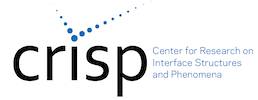Our kits are currently being reviewed and updated by a team of collaborative, innovative and interdisciplinary educators who wish to enhance the educational opportunities for students. These dedicated teachers are members of CRISP Collaborative Science for All (CCSA) as well as local educators.
Click to see the SCSU CRISP Module Template used by CCSA for improving and updating the CRISP demos and kits. Each kit page offers a CRISP developed teacher module and CRISP aligned standards (both NGSS and CCSS)
Kit Request form

Your decisions about which products to buy can have a big impact on technologies and systems.
People’s values determine which technologies are developed and used. The tokens in this game represent your potential support for new technologies. You might choose to put your tokens toward a technology that someone else in your group isn’t interested in, and you might be surprised by the things other people value. And your group’s opinions about these technologies might be very different from those of people in other parts of the world.
Every day, we make decisions related to technologies—as individuals and as a society. For example, in the US many people have strong feelings about what food they buy and eat. Some families choose organic ingredients and local produce, while others prefer conventionally grown foods. Individual priorities, business practices, and government policies all affect science and technologies.
Adapted from Building with Biology Toolkits originally created for NISEnet via the Building with Biology project
This material is based upon work supported by the National Science Foundation under Grant Number DRL 1421179. Any opinions, findings, and conclusions expressed in this material are those of the authors and do not necessarily reflect the views of the National Science Foundation.
Subject(s):
Synthetic Biology, Biotechnology, Technology and Society
Objectives:
- Technologies and society are interconnected.
- People’s values determine which technologies are developed and used.
- Synthetic biology benefits from many voices.
Materials in this kit:
- Activity and facilitator guides
- Activity sign and holder
- Technology and character cards
- 50 tokens (5 sets of 10, in different colors)
- Reference sheet: Synthetic Biology
Suggestions for the Teacher:
Things to talk about:
- Does everyone in your group value the same technologies? Why or why not?
- How might some of these new technologies change the way we live? Would the changes benefit everyone equally, all around the world?
Safety:
Additional Resources:
Tech Tokens Teacher Module
BwB_Tech Tokens_tech cards
BwB_Tech Tokens_character cards
Tech Tokens CRISP aligned standards
BwB Tech Token Facilitators Guide
Genetic Engineering Reference
Traditional Agricultural Breeding Reference
Synthetic Biology Reference
STEM Careers:
Bio-engineer
Bioinformatics Specialist
Biomedical Engineer
Customer Sales Representative
Environmental Scientist
Environment Technician
Investment Banker
Manufacturing Technician
Market Research Analyst
Medical Technologist
Quality Control/Quality Assurance Technician
Research Scientist
Standards:
MS-ETS1-1 Engineering Design
- Define the criteria and constraints of a design problem with sufficient precision to ensure a successful solution, taking into account relevant scientific principles and potential impacts on people and the natural environment that may limit possible solutions.
HS-ETS1-1 Engineering Design
- Analyze a major global challenge to specify qualitative and quantitative criteria and constraints for solutions that account for societal needs and wants.
MS - ETS1.A: Defining and Delimiting Engineering Problems
- The more precisely a design task’s criteria and constraints can be defined, the more likely it is that the designed solution will be successful. Specification of constraints includes consideration of scientific principles and other relevant knowledge that are likely to limit possible solutions.
HS - ETS1.A: Defining and Delimiting Engineering Problems
- Criteria and constraints also include satisfying any requirements set by society, such as taking issues of risk mitigation into account, and they should be quantified to the extent possible and stated in such a way that one can tell if a given design meets them.
- Humanity faces major global challenges today, such as the need for supplies of clean water and food or for energy sources that minimize pollution, which can be addressed through engineering. These global challenges also may have manifestations in local communities.
Interdependence of Science, Engineering, and Technology
- All human activity draws on natural resources and has both short and long-term consequences, positive as well as negative, for the health of people and the natural environment. (MS)
- The uses of technologies and limitations on their use are driven by individual or societal needs, desires, and values; by the findings of scientific research; and by differences in such factors as climate, natural resources, and economic conditions. (MS)
- New technologies can have deep impacts on society and the environment, including some that were not anticipated. Analysis of costs and benefits is a critical aspect of decisions about technology. (HS)
SEP 1 - Asking Questions and Defining Problems
- Define a design problem that can be solved through the development of an object, tool, process or system and includes multiple criteria and constraints, including scientific knowledge that may limit possible solutions.(MS)
- Analyze complex real-world problems by specifying criteria and constraints for successful solutions.(HS)
Suggested Video(s):
Tech Tokens from NISE Network on Vimeo.
